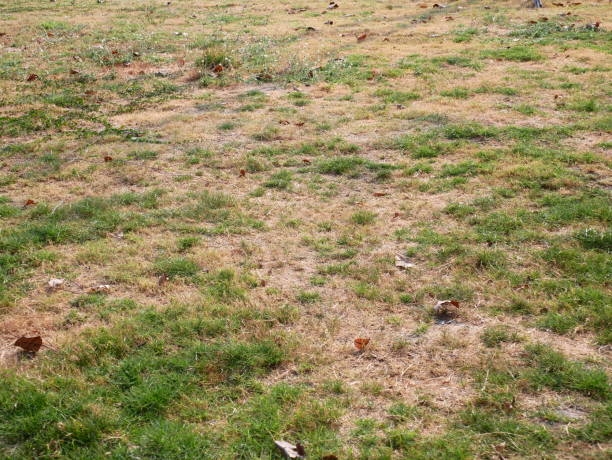Many homeowners in the Pacific Northwest suffer from poor quality lawn areas and in some cases entire lawns. To determine the appropriate resolution, it is important to first determine why your lawn is not thriving. There are numerous reasons.
Poor drainage
Poor soil drainage is the number one cause for lawn challenges. This problem can be identified by the presence of moss or standing water. If you have a considerable amount of moss present in your lawn, it indicates a drainage issue, where surface water is unable to adequately drain through the soil, which drowns the grass, leading to poor grass root establishment, which allows moss to quickly establish. Most soil types with poor drainage, such as high clay content usually also suffer from poor soil oxygen levels, which is also optimum conditions for moss establishment. Soil types with clay material can be amended with compost or mixed with a well-draining top soil. Another solution is aerating the soil, which is usually done via mechanical means, which spike the soil and plugs of soil are removed. The holes left behind after the plugs are removed allow oxygen to penetrate the soil and improves drainage. Another common reason for drainage issues is related to sloping of your property. If an area of your property is lower and bowl shaped, this can trap surface water. A solution is to re-slope if possible or install a French drain to divert the water to another location where it can disperse.
Poor soil quality
Many other lawn challenges relate to poor quality soil. This is especially common with many newer homes where builders use low quality fill material extensively and then cover this with a small skim coat of top soil. If the quantity of top soil is insufficient, there may not be enough nutrients in the soil to allow the grass to properly establish. Symptoms of this problem is yellowing, patchy grass with significant weed establishment. Resolving this issue usually requires removing the grass. Weeds and vegetation by mechanical means (ie rototilling) or by chemical means of spraying herbicide grass killer. Once the old grass is gone, a good layer of new soil (2-4”+) is imported and put in place. The final step is to seed the area with a quality grass seed that is a good fit for the area as well as a starter fertilizer. After seeding, the area should be kept moist for the next few weeks while the grass seed germinates. If you are in a hurry for new lawn, faster but significantly more expensive solutions include hydroseeding, where a slurry mix of water/newspaper shreds and grass seed is sprayed on the area and also sod, where complete rolls of soil/grass are delivered and rolled out in place like a carpet.
Improper preparation / Improper seeding
Another common problem involves areas that were either not properly prepared (no grading / no topsoil) or where the area was not properly seeded or the seed did not properly germinate. These areas are often very lumpy and the grass quality is patchy with an abundance of weeds. Resolving this issue usually requires removing the grass. Weeds and vegetation by mechanical means (ie rototilling) or by chemical means of spraying herbicide grass killer. Once this is completed, the area can be leveled and graded and a quality top soil can be imported. The final step is to seed the area with a quality grass seed that is a good fit for the area as well as a starter fertilizer. After seeding, the area should be kept moist for the next few weeks while the grass seed germinates. If you are in a hurry for new lawn, faster but significantly more expensive solutions include hydroseeding, where a slurry mix of water/newspaper shreds and grass seed is sprayed on the area and also sod, where complete rolls of soil/grass are delivered and rolled out in place like a carpet.
Graystone tractor service is well experienced in resolving common lawn issues and can help amend or replace your lawn. Our lawn and garden preparation services can quickly get you on the road to a healthy lawn. Call / text us at (360) 542-6460 or fill out our free estimate request form.


